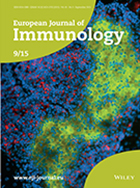- Submit a Protocol
- Receive Our Alerts
- Log in
- /
- Sign up
- My Bio Page
- Edit My Profile
- Change Password
- Log Out
- EN
- EN - English
- CN - 中文
- Protocols
- Articles and Issues
- For Authors
- About
- Become a Reviewer
- EN - English
- CN - 中文
- Home
- Protocols
- Articles and Issues
- For Authors
- About
- Become a Reviewer
Isolation and Culture of the Islets of Langerhans from Mouse Pancreas
Published: Vol 6, Iss 12, Jun 20, 2016 DOI: 10.21769/BioProtoc.1840 Views: 25985
Reviewed by: Ivan ZanoniFrancesca MingozziEmilie Battivelli

Protocol Collections
Comprehensive collections of detailed, peer-reviewed protocols focusing on specific topics
Related protocols
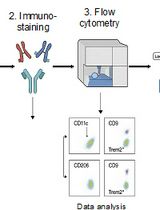
Identification and Sorting of Adipose Inflammatory and Metabolically Activated Macrophages in Diet-Induced Obesity
Dan Wu [...] Weidong Wang
Oct 20, 2025 2095 Views
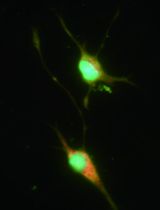
Selective Enrichment and Identification of Cerebrospinal Fluid-Contacting Neurons In Vitro via PKD2L1 Promoter-Driven Lentiviral System
Wei Tan [...] Qing Li
Nov 20, 2025 1244 Views
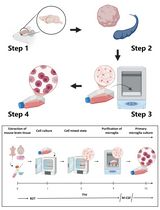
Revisiting Primary Microglia Isolation Protocol: An Improved Method for Microglia Extraction
Jianwei Li [...] Guohui Lu
Dec 5, 2025 1122 Views
Abstract
The islets of Langerhans are clusters of endocrine cells located within the pancreas. Insulin-producing beta cells are the major cell type within islets, with glucagon-producing alpha cells and somatostatin-producing delta cells the other major cell types. The beta cells are the target of immune-mediated destruction in type 1 diabetes (Graham et al., 2012). Failure of beta cell function accompanied by loss of beta cell mass is also a feature of type 2 diabetes (Wali et al., 2013). Therefore studying the biology of pancreatic islets is important to understand the pathogenesis of diabetes and to develop new therapies. Here we describe the isolation of mouse islets. This requires gentle enzymatic and mechanical digestion of the exocrine tissue and density gradient separation (Chong et al., 2004; Liu and Shapiro, 1995; Thomas et al., 1998). We then describe how islets can be cultured whole or dispersed into single cells for use in a variety of in vitro and in vivo analyses. Using this protocol reliably results in the isolation of 200-400 islets, depending on the strain of mouse.
Materials and Reagents
- 50 ml polypropylene conical tubes (Corning, Falcon®, catalog number: 352070 )
- 0.2 µm syringe filter (e.g., Sartorius AG, catalog number: 16534-k )
- Syringe (volume dependent on volume of collagenase P prepared)
- Ice
- 2 ml slip tip syringe (will hold total volume of 3 ml) (BD, catalog number: 302204 )
- 30 G x ½ in. needle (BD, catalog number: 305106 )
- 500 micron mesh (Sefar Pty Ltd., catalog number: 06-500/38 )
Note: cut into approximately 5 cm squares and autoclaved (Figure 1) (see Notes for alternative product)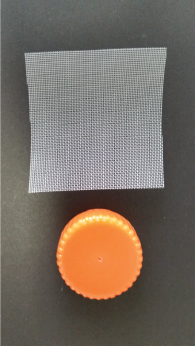
Figure 1. 500 µm islet mesh from Sefar Pty Ltd and 50 ml tube lid shown for size reference
- Collagenase P (Roche Diagnostics, catalog number: 11213865001 )
Note: It requires testing and optimisation prior to use (see Note 1). - RPMI 1640 medium (Life Technologies, Gibco, catalog number: 21870-076 )
Note: Currently, it is “Thermo Fisher Scientific, GibcoTM, catalog number: 21870-076”. - Histopaque®-1077 (Sigma-Aldrich, catalog number: H8889 )
- Hanks balanced salt solution (HBSS) (Life Technologies, Gibco, catalog number: 14175-079 )
Note: Currently, it is “Thermo Fisher Scientific, GibcoTM, catalog number: 14175-079”. - Calcium chloride dihydrate (CaCl2·2H2O) (Sigma-Aldrich, catalog number: C5080 )
- HEPES (Sigma-Aldrich, catalog number: H3375-100G )
- HBSS/Ca/HEPES (see Recipes)
Equipment
- Icebox
- Dissecting microscope [e.g., Stereoscopic zoom microscope, (Nikon Instruments Inc., model: SMZ745 )]
- Fibre optic light source (e.g., AmScope Dual Goose-neck Fiber-Optic Illuminator, model: HL150-AY )
- Forceps [e.g., Graefe forceps, 100 mm, curved (ProSciTech Pty Ltd., catalog number: T131C-2 )]
- Scissors [e.g., Iris scissors, 115 mm, straight (ProSciTech Pty Ltd., catalog number: T097-2 )]
- Clamp [e.g., 150 mm spencer wells forceps, straight (ProSciTech Pty Ltd., catalog number: T124 )]
- Bench-top centrifuge at room temperature, no brake required (e.g., Thermo Fisher Scientific, HeraeusTM, model: Multifuge X1R )
Procedure
- Measure 5 ml per pancreas of HBSS/Ca/HEPES into a 50 ml tube.
Measure 5 ml per pancreas of RPMI into a 50 ml tube.
Measure 10 ml per pancreas of Histopaque into a 50 ml tube. Use multiple tubes if more than 50 ml is required but spread contents evenly across the tubes. - Place all media at 37 °C in water bath.
- Weigh sufficient collagenase P to prepare 3 ml per mouse at the specified concentration for the batch of collagenase P (see Notes 1-3). Place weighed collagenase P into a 50 ml tube.
- Dissolve the collagenase P in cold (4 °C) HBSS/Ca/HEPES solution. Add the required volume of HBSS/Ca/HEPES to 50 ml tube containing weighed collagenase P and gently invert 2-3 times. Allow to stand for 1-2 min, then sterilize using a 0.2 µm filter and syringe. Keep collagenase P solution on ice from this point onwards.
- Place 3 ml collagenase P into a 2 ml slip tip syringe and attach a 30 G needle. Keep filled syringes on ice. Do not use a syringe with a LuerLok as the pressure when dispelling liquid is too great and the bile duct will tear.
- Please view Video 1 for details on how to perform the bile duct injection procedure. In brief, open the mouse abdominal cavity and cut through the peritoneal wall horizontally following the rib line and vertically using small straight scissors. Place a tissue over the upper body of the mouse with the tissue edge on the rib line. Gently press on either side of the mouse body with your fingers so the liver is exposed below the rib line. Flip the liver over onto the tissue and fold the tissue over to cover it. Wet with a small amount of ethanol and gently press down to hold everything in place.Video 1. Bile duct injection and pancreas dissection
- Place a square of autoclaved 500 µm mesh on the top of a new 50 ml tube (one per pancreas) and wet the mesh with a small amount (1-2 ml) of cold RPMI. Pour the digested pancreas through the mesh. Wash any remaining pancreas from its original tube with 30 ml cold RPMI and pour through the mesh. Cap the collection tube and return to the ice. Note that some undigested tissue may remain on top of the mesh. Repeat with other samples.
- Gently dissect the inflated pancreas, being careful not to cut the stomach or intestines or other abdominal organs, and place into an empty 50 ml tube. Keep on ice. Repeat steps 6-8 for other animals.
- When all pancreata have been resected add warm HBSS/Ca/HEPES to the tube to a total volume of 5 ml/pancreas and place at 37 °C in a water bath. The incubation time varies between batches of collagenase P and strains of mouse (see Notes 1 and 5).
- When the pancreata are placed in the waterbath, remove the prepared tubes of Histopaque and RPMI from the 37 °C waterbath. These should cool to room temperature during the collagenase P digestion incubation.
- Remove the tubes of pancreata from the waterbath and place immediately on slushy ice (ice in water). Do not swirl, shake or disturb the settled tissue.
- Immediately and working as quickly as possible, pour as much warm HBSS/Ca/HEPES and collagenase P mix off each pancreas as possible, without removing the pancreas from the tube. Top up each tube to 15 ml with ice-cold HBSS/Ca/HEPES. This step stops the digestion process by rapidly cooling the pancreas.
- Disrupt the pancreas by vigorously hand shaking the tubes for 1 min at a rate of 3 shakes per second. Hold the tubes upright and allow the pancreas to hit both the top and bottom of the tube (see Video 2). Do not invert the tubes. Place the tubes on ice.Video 2. Disruption of the pancreas by vigorous shaking
- Place a square of autoclaved 500 µm mesh on the top of a new 50 ml tube (one per pancreas) and wet the mesh with a small amount (1-2 ml) of cold RPMI. Pour the digested pancreas through the mesh. Wash any remaining pancreas from its original tube with 30 ml cold RPMI and pour through the mesh. Cap the collection tube and return to the ice. Note that some undigested tissue may remain on top of the mesh. Repeat with other samples.
- Allow digested pancreas to settle by gravity in the 50 ml tube on ice for 10 min.
- Aspirate the supernatant using a 25 ml pipette leaving 10-15 ml behind. Be careful not to disrupt the digested tissue. Top-up the tubes of digested pancreas with RPMI to a total volume of 30 ml and mix by gently inverting 2-3 times.
- Centrifuge tubes at 215 x g for 2 min at room temperature.
- Gently pour off the supernatant, being careful not to dislodge the pellet. Place tubes upside down on a paper tissue so residual media drains away. It is important to remove all media so the Histopaque is not diluted.
- Flick the pellets to loosen the digested pancreas. Tubes should remain at room temperature from this point. All reagents and centrifugation steps should be at room temperature (22 °C).
- Add 10 ml of Histopaque to each tube (must be at room temperature). Swirl gently to get an even distribution of digested pancreas. If there are clumps, gently break them up with a pipette. Avoid vigorous pipetting.
- Overlay each Histopaque gradient with 5 ml of RPMI (must be at room temperature). Ensure the interface is sharp and clear as this is where the islets will sit after centrifugation.
- Centrifuge at 850 x g for 15 min at 22 °C with the brake OFF.
- Gently remove the islets from the gradient using a plastic transfer pipette. The islets will be visible in a ring just below the interface of the RPMI and Histopaque (see Figure 3). Remove as much RPMI and Histopaque as required to remove the islets without disturbing the pellet. If islets that have immune cell infiltrate are being isolated from NOD mice, see Note 6 for detail on the location and removal of islets from the gradient.

Figure 3. Location of islets at Histopaque/RPMI gradient interface. A. Schematic diagram and photograph of normal islets forming a ring just below the Histopaque/RPMI interface. B. Schematic diagram and photograph of infiltrated islets from a NOD mouse spread through the Histopaque. Schematic diagram shows transfer pipette used to harvest the islets from the gradient. - Transfer the islets to a new 50 ml tube containing 30 ml RPMI (room temperature).
- Centrifuge at 215 x g for 2 min at room temperature.
- Gently pour off the supernatant and blot tubes on a paper tissue. At this point islets can be cultured or trypsinized to single cells.
Materials and Reagents
- 94 x 15 mm PPetri dishes (Greiner Bio One International GmbH, catalog number: 633185 )
- FCS
- Glutamine
- Penicillin
- Streptomycin
- CMRL Medium, no glutamine (Life Technologies, Gibco, catalog number: 11530-037 ) (see Recipes)
Note: Currently, it is “Thermo Fisher Scientific, GibcoTM, catalog number: 11530-037 ”. - Complete CMRL (see Recipes)
Equipment
- Incubator at 37 °C with 5% CO2, relative humidity ambient to 80% [e.g., Series II 3110 Water-Jacketed CO2 incubators (Thermo Fisher Scientific, FormaTM, model: 3131 )]
Procedure
- Flick the islet pellet gently to resuspend and then add 5 ml of warm complete CMRL.
- Transfer the islets to a Petri dish by pouring. Do not use tissue culture dishes as islets will adhere.
- Remove residual islets by washing the tube with a further 5 ml of warm complete CMRL and pour this into the Petri dish. Do not put more than 10 ml medium into a 94 mm dish to ensure sufficient oxygenation for the islets, which are highly susceptible to hypoxia.
- Ensure the islets are spread within the dish and place dishes in a 5% CO2 incubator at 37 °C. Allow the islets to recover for 0.5-1 h prior to further manipulation.
- Under a dissecting microscope with an external light source, handpick the islets using a sterile 200 µl pipette tip into tubes or Petri dishes as required for further analysis (see Figure 4).
- Islets can be cultured for up to three days at 37 °C + 5% CO2.

Figure 4. Handpicking of isolated islets for in vitro culture - The islet yield varies between mouse strains. The expected yield from a C57Bl/6 mouse is 300-400 islets whereas the expected yield from a non-obese diabetic (NOD) mouse is 150-300 islets depending on the age of the mouse (see Note 6).
Materials and Reagents
- 1 ml Gilson pipette
- 0.2 µm syringe filter (e.g., Sartorius AG, catalog number: 16534-k )
- FCS
- Glutamine
- Penicillin
- Streptomycin
- Dulbecco’s phosphate buffered saline
- Bovine trypsin
- EDTA
- CMRL Medium, no glutamine (Life Technologies, Gibco, catalog number: 11530-037 ) (see Recipes)
Note: Currently, it is “Thermo Fisher Scientific, GibcoTM, catalog number: 11530-037 ”. - Complete CMRL 1066 (see Recipes)
- Trypsin for islets (see Recipes)
Equipment
- 37 °C waterbath (e.g., Ratek Instruments, model: WB14 )
- Incubator at 37 °C with 5% CO2, relative humidity ambient to 80% [e.g., Series II 3110 Water-Jacketed CO2 incubators (Thermo Fisher Scientific, FormaTM, model: 3131 )]
Procedure
- Please view Video 3 for trypsinization of islets.
- Add 300 µl trypsin to the islet pellet.
- Incubate for 5 min at 37 °C in a waterbath.
- Pipette the islets up and down 10 times using a 1 ml Gilson pipette. The islets should disperse and this can be visualized. See Video 3.
- Add 3-5 ml complete CMRL to stop the trypsin reaction.
- Centrifuge at 305 x g for 5 min to pellet the single cells.
- Pour off the media and replace with 1 ml of complete CMRL.
- Incubate the tube containing trypsinized islets at 37 °C in a 5% CO2 incubator for 1-2 h to allow recovery of the cells before further experiment/analysis.Video 3. Trypsinization of islets to single cells
Notes
- There is significant variation in collagenase P activity of each enzyme lot number. The variation alters the concentration used and the time of the digestion. An ideal batch of enzyme should have a collagenase P activity of 1.6-2.2 U/mg to be used at a concentration range of 0.3 mg/ml-0.55 mg/ml and incubation time of 15-17 min. The balance between collagenase activity and trypsin activity also varies widely and for efficient islet isolation, it is important that the trypsin activity is not too high. Trypsin activities within the range of 2.63-4.3 U/mg provide optimal results. The trypsin activity must be < 5 U/mg.
When purchasing a new lot number of collagenase P conduct thorough testing, including titration of concentration and incubation time. - Collagenase P should be brought to room temperature prior to weighing to prevent condensation and damage to the product. If a large quantity is purchased, place a small amount in a new bottle as a ‘working batch’ so as not to lose activity of the whole stock.
- Wear a mask and gloves when weighing Collagenase P, as it is both a respiratory and skin irritant.
- The length and fragility of the bile duct varies with different strains of mice. C57Bl/6 and genetic derivatives have shorter and more fragile bile ducts than other strains. Be very careful when clamping and inserting the needle into the duct and inject Collagenase P solution slowly. Bile ducts in the obese diabetic mouse model Leprdb/db are very fragile and require extra care.
- The above protocol can be used to isolate islets from any mouse strain, however, there are slight variations in digestion incubation time depending on which strain is used. C57Bl/6 islets are more prone to over digestion than Balb/C or NOD mouse islets and incubation times for C57Bl/6 mice and genetic variations of this strain should always be reduced by approximately 1 min.
- The NOD mouse is animal model of type 1 diabetes that develops progressive infiltration of islets by immune cells beginning at approximately 4 weeks of age (Graham et al., 2012). The presence of immune cells alters the position of the islets within the density gradient. Islets containing immune cells will spread out and appear well below the Histopaque/RPMI interface (see Figure 3). The immune-mediated destruction of the islets in NOD mice also decreases the islet yield in older mice.
- Cell strainers, for example PluriStrainer 500 µm from pluriSelect (https://www.pluriselect.com/product-details/product/pluristrainer-500-um-cell-strainer.html) could be used as an alternative to the 500 µm mesh used in Part I. step 14 of the islet isolation procedure. However these have not been tested in our laboratory.
Recipes
- HBSS/Ca/HEPES
1 L of Hanks balanced salt solution (HBSS)
2 mM CaCl2
20 mM HEPES
Combine all reagents in a sterile biosafety cabinet
Stored at 4 °C - Complete CMRL
500 ml CMRL 1066
10% FCS
2 mM glutamine
100 U/ml penicillin
100 µg/ml streptomycin
Combine all reagents in a sterile biosafety cabinet
Stored at 4 °C - Trypsin for islets
50 ml Dulbecco’s phosphate buffered saline
5.16 mg bovine trypsin
20 mM EDTA (0.2 ml of 0.5 M EDTA)
Combine all ingredients
Sterilize through a 0.2 µm syringe filter
Aliquot and stored at -20 °C
Acknowledgments
This protocol has been developed and refined by members of our laboratory since it was first published (Chong et al., 2004; Liu and Shapiro, 1995; Thomas et al., 1998). We acknowledge all members of the group who have contributed to this process. We routinely utilize this protocol in our studies of the pathogenesis of type 1 and type 2 diabetes in mouse models (Chee et al., 2014; Graham et al., 2011; Quah et al., 2014; Wali et al., 2014; Zhao et al., 2015). This work was funded by a National Health and Medical Research Council of Australia (NHMRC) Program grant (APP1037321) and a fellowship to HET (APP1042735). The St Vincent’s Institute receives support from the Operational Infrastructure Support Scheme of the Government of Victoria.
References
- Chee, J., Ko, H. J., Skowera, A., Jhala, G., Catterall, T., Graham, K. L., Sutherland, R. M., Thomas, H. E., Lew, A. M., Peakman, M., Kay, T. W. and Krishnamurthy, B. (2014). Effector-memory T cells develop in islets and report islet pathology in type 1 diabetes. J Immunol 192(2): 572-580.
- Chong, M. M., Chen, Y., Darwiche, R., Dudek, N. L., Irawaty, W., Santamaria, P., Allison, J., Kay, T. W. and Thomas, H. E. (2004). Suppressor of cytokine signaling-1 overexpression protects pancreatic beta cells from CD8+ T cell-mediated autoimmune destruction. J Immunol 172(9): 5714-5721.
- Graham, K. L., Krishnamurthy, B., Fynch, S., Mollah, Z. U., Slattery, R., Santamaria, P., Kay, T. W. and Thomas, H. E. (2011). Autoreactive cytotoxic T lymphocytes acquire higher expression of cytotoxic effector markers in the islets of NOD mice after priming in pancreatic lymph nodes. Am J Pathol 178(6): 2716-2725.
- Graham, K. L., Sutherland, R. M., Mannering, S. I., Zhao, Y., Chee, J., Krishnamurthy, B., Thomas, H. E., Lew, A. M. and Kay, T. W. (2012). Pathogenic mechanisms in type 1 diabetes: the islet is both target and driver of disease. Rev Diabet Stud 9(4): 148-168.
- Liu, M. and Shapiro, M. E. (1995). A new method for isolation of murine islets with markedly improved yields. Transplant Proc 27(6): 3208-3210.
- Quah, H. S., Miranda-Hernandez, S., Khoo, A., Harding, A., Fynch, S., Elkerbout, L., Brodnicki, T. C., Baxter, A. G., Kay, T. W., Thomas, H. E. and Graham, K. L. (2014). Deficiency in type I interferon signaling prevents the early interferon-induced gene signature in pancreatic islets but not type 1 diabetes in NOD mice. Diabetes 63(3): 1032-1040.
- Thomas, H. E., Parker, J. L., Schreiber, R. D. and Kay, T. W. (1998). IFN-gamma action on pancreatic beta cells causes class I MHC upregulation but not diabetes. J Clin Invest 102(6): 1249-1257.
- Wali, J. A., Masters, S. L. and Thomas, H. E. (2013). Linking metabolic abnormalities to apoptotic pathways in Beta cells in type 2 diabetes. Cells 2(2): 266-283.
- Wali, J. A., Rondas, D., McKenzie, M. D., Zhao, Y., Elkerbout, L., Fynch, S., Gurzov, E. N., Akira, S., Mathieu, C., Kay, T. W., Overbergh, L., Strasser, A. and Thomas, H. E. (2014). The proapoptotic BH3-only proteins Bim and Puma are downstream of endoplasmic reticulum and mitochondrial oxidative stress in pancreatic islets in response to glucotoxicity. Cell Death Dis 5: e1124.
- Zhao, Y., Scott, N. A., Fynch, S., Elkerbout, L., Wong, W. W., Mason, K. D., Strasser, A., Huang, D. C., Kay, T. W. and Thomas, H. E. (2015). Autoreactive T cells induce necrosis and not BCL-2-regulated or death receptor-mediated apoptosis or RIPK3-dependent necroptosis of transplanted islets in a mouse model of type 1 diabetes. Diabetologia 58(1): 140-148.
Article Information
Copyright
© 2016 The Authors; exclusive licensee Bio-protocol LLC.
How to cite
Graham, K. L., Fynch, S., Papas, E. G., Tan, C., Kay, T. W. and Thomas, H. E. (2016). Isolation and Culture of the Islets of Langerhans from Mouse Pancreas. Bio-protocol 6(12): e1840. DOI: 10.21769/BioProtoc.1840.
Category
Immunology > Immune cell isolation > Maintenance and differentiation
Cell Biology > Cell isolation and culture > Cell isolation
Do you have any questions about this protocol?
Post your question to gather feedback from the community. We will also invite the authors of this article to respond.
Share
Bluesky
X
Copy link


